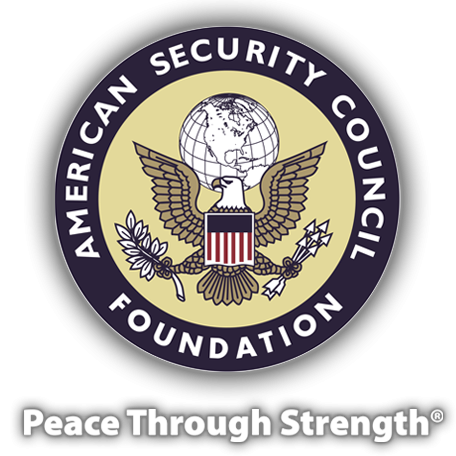Navy Needs More Fleets and More Ships to Deter China

By Alan W. Dowd, ASCF Senior FellowDECEMBER 2020—Navy Secretary Kenneth Braithwaite has proposed reactivating the U.S. 1st Fleet to relieve some of the burden on the 7th Fleet and expand the number of tools available for containing China. There is good reason and solid precedent for such a course of action, but there are also obstacles the incoming Biden administration will need to address to make Braithwaite’s plan a reality.
ConcentratedA revived 1st Fleet makes sense for at least three reasons.
First, 80 percent of seaborne trade transits the Indian Ocean, which would be the 1st Fleet’s main focus. Yet the U.S. currently allocates just 50 or so ships to ensure freedom of the seas in this vital waterway and prevent China from a fait accompli takeover of Indian Ocean sealanes.
That brings us to a second reason the Navy needs another fleet: China’s behavior. Beijing illegally claims 90 percent of the South China Sea, is turning reefs hundreds of miles outside its territorial waters into military outposts to enforce those claims, is building a network of ports and bases all along the coastline of the Asian mainland, is bullying and harassing foreign ships passing through international waters it illegally claims, and continues a massive military expansion. China’s annual defense outlays now eclipse $260 billion—a staggering 572-percent increase since 1999. Part of the payoff from that spending binge is a bigger, more lethal navy. With 335 ships, China now boasts the world’s largest navy. Importantly, virtually all of those ships are focused and concentrated on China’s neighborhood.
That leads to a third reason the 1st Fleet makes sense: The 7th is overstretched and underequipped. The 7th Fleet is tasked with overwatching the Western Pacific Ocean and a large chunk of the Indian Ocean—some 48 million square-miles of seaspace. Yet the 7th Fleet is allotted just 50 ships for this mammoth mission, although at times the 7th Fleet’s ship count crests as high as 70 warships.Growing the NavyStanding up a new fleet focused on the Indian Ocean and its approaches “would be akin to grabbing China by the throat,” according to a former PLA official. But America needs more ships—not just more fleets—to get China’s attention.
At the height of President Reagan’s rebuild, the Navy boasted 594 ships. While today’s Navy may be more ambidextrous than the Cold War-era Navy, at just 296 ships, it lacks the assets to be present in all the places it’s needed, as underscored by the strained 7th Fleet. As Braithwaite’s predecessor Thomas Modly observed in 2019, America has “less than half of the Navy we had 30 years ago, but arguably three times the responsibility.”
“For us to meet what combatant commanders request,” according to former CNO Adm. Jonathan Greenert, “we need a Navy of 450 ships.” A government-funded study concludes that the U.S. needs 14 aircraft carriers (the Navy has 10 active), 160 cruisers and destroyers (the Navy has 84), and 72 attack submarines (the Navy has 52).Closing these gaps via traditional ship-building efforts seems highly unlikely given the long-term fiscal costs created by the government’s response to the COVID19 pandemic. But these gaps have real-world implications: When Tehran threatened to close the Strait of Hormuz during the Obama administration, CENTCOM requested an extra aircraft carrier to send a strong deterrent signal. That request was denied because the carrier was needed in the Pacific. When the Obama administration ordered warplanes from the USS George H.W. Bush to blunt the ISIS blitzkrieg, Greenert admitted “they stopped their sorties” over Afghanistan to do so. Similarly, the Trump administration’s sleight-of-hand with the USS Carl Vinson in 2017 and the revelation that all six East Coast-based carriers—Eisenhower, Washington, Stennis, Truman, Bush and Ford—were docked rather than deployed in fall 2019 underscore that the U.S. doesn’t have the maritime firepower it needs to dissuade foes and reassure allies.
Life extensions and reactivations can help grow the Navy, as can the addition of low-cost unmanned warships. Modly suggests that unmanned warships could ultimately comprise more than 10 percent of the fleet. Unmanned systems are certainly part of the solution, though removing humans from the battlespace presents other dilemmas and problems.
There are other solutions policymakers should explore to increase the number of ships in America’s fleets: The Army deploys 300 maritime vessels. Increased Army-Navy jointness could enable a more dynamic use of the Army’s ocean-going assets. More Coast Guard cutters could be deployed to support Navy operations, and Coast Guard cutters could be fitted with anti-ship weapons systems (as they were in the 1980s). Indeed, “multi-purposing” and “up-gunning” existing ships is a way to grow the fleet rapidly. In fact, Army and Marine units are testing the concept.
Finally, we could broaden our definition of what constitutes the fleet. Adm. Mike Mullen promoted the “thousand-ship navy” concept during his tenure as chairman of the Joint Chiefs of Staff. The United States, he explained, “must count on assistance from like-minded nations interested in using the sea for lawful purposes…a 1,000-ship navy…made up of the best capabilities of all freedom-loving navies of the world.”
Toward that end, the U.S., India, Australia and Japan—the so-called “Quad security partners”—are widening and deepening cooperation on training, basing, procurement, intelligence-sharing and most notably, naval exercises. November saw the quartet send warships into Indian waters for largescale war games featuring U.S. and Indian aircraft carriers. Related, Britain’s newest aircraft carrier will steam to the Indo-Pacific region for its maiden deployment. France is actively patrolling the region’s waters. Canada has sent warships through the Taiwan Strait multiple times the past two years. And NATO is working with Australia, Japan, New Zealand and South Korea to counter China’s “bullying and coercion.”
RoadmapBraithwaite wants the reactivated 1st Fleet would to secure “the crossroads between the Indian and the Pacific oceans.” (The phrase “reactivated 1st Fleet” is used because the 1st Fleet existed from 1947 to 1973.) He believes that the new 1st Fleet “can provide a much more formidable deterrence” than an overstretched 7th Fleet.Currently, the 5th Fleet is tasked with policing the waters of the Middle East and the western Indian Ocean, up to the India-Pakistan border, where the 7th Fleet takes over. The reactivated 1st Fleet would likely overwatch an area stretching from the India-Pakistan border to the Strait of Malacca, which separates the Asian mainland from the Indonesian archipelago. That southmost tip of the Asian mainland also happens to be where Singapore is located. The strategic island city-state is a longtime defense partner of the U.S. and a leading candidate for the 1st Fleet’s hub or homeport, as Braithwaite noted in November. Army, Air Force, Marine and Navy units have partnered with the Singaporean military for decades. The U.S. currently has three littoral combat ships and 1,000 troops based in Singapore as part of a logistics unit that resupplies, re-fuels and re-arms the 7th Fleet’s warships. The U.S. also flies sub-hunting P-8 Poseidons out of Singapore.In the past few years, the Pentagon has reactivated the Army’s V Corps (which was deactivated in 2012, after defending Europe throughout the Cold War); reactivated the Navy’s 2nd Fleet (which was deactivated in 2011, after defending the North Atlantic throughout the Cold War); and returned assets to Cold War-era ports in France and Greece—all in response to the new/old threats to Europe posed by Moscow. Following a similar roadmap in the Indo-Pacific makes sense as America and its free world allies wade into Cold War 2.0.
Photo Source










